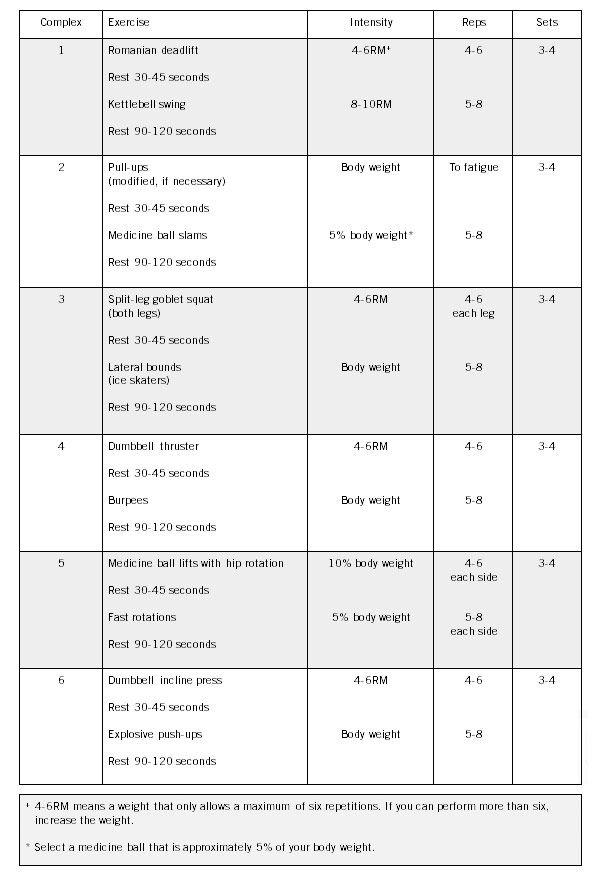When it comes to achieving peak performance, athletes rely not only on talent and hard work but also on the foundation of a well-designed athletic training program. building success in sports goes far beyond the hours spent on the field or court—it requires a strategic, comprehensive approach that integrates physical conditioning, injury prevention, mental resilience, and personalized coaching. In this article, we’ll take you inside the components of an effective athletic training program, exploring how these elements come together to elevate athletes from potential to proven success. Whether you’re a coach, trainer, or athlete, understanding the core principles behind these programs can transform your approach to training and performance.
Table of Contents
- understanding the Core Components of a Comprehensive Athletic Training Program
- Designing Tailored Training Regimens for Peak performance
- Incorporating Injury Prevention and Recovery Strategies
- Leveraging Technology and Data to Enhance Athlete Development
- To Wrap It Up
Understanding the Core Components of a Comprehensive Athletic Training Program
At the heart of an effective athletic training program lies a well-rounded approach that balances physical conditioning, injury prevention, and mental resilience. This multifaceted strategy ensures athletes not only peak in performance but also sustain longevity in their careers. Central to this is periodized training cycles that carefully structure intensity and recovery, allowing the body to adapt progressively. Equally vital is the integration of sport-specific exercises that maximize functional strength and agility, tailored to the demands of each athlete’s discipline.The role of nutrition and hydration cannot be overstated, as these fuel the training process and expedite recovery, making them indispensable pillars within the program.
Moreover, a comprehensive program emphasizes continuous monitoring and assessment through:
- Biomechanical evaluations to identify and correct movement inefficiencies, reducing injury risks.
- psychological support that fosters a growth mindset, enhances focus, and manages stress.
- Customized rehabilitation protocols for swift, safe returns from injury.
By incorporating these elements, athletic trainers create an ecosystem where each component synergizes to propel athletes toward sustained success and optimal performance.
Designing Tailored Training regimens for Peak Performance
The foundation of maximizing athletic potential lies in crafting training programs that address the unique needs of each individual athlete. By analyzing key factors such as sport-specific demands, physical capabilities, recovery rates, and psychological readiness, trainers can design plans that not only enhance performance but also minimize injury risk. This bespoke approach ensures that every training session has a clear purpose, contributing incrementally to an athlete’s development.
A great training regimen integrates multiple components to build well-rounded proficiency, including:
- Strength and Conditioning: Targeted exercises to boost power and endurance tailored to the athlete’s discipline.
- Technical Skills Development: Focused drills that refine the fundamental movements required in their sport.
- Recovery Protocols: Personalized strategies such as active rest, nutrition, and sleep optimization to promote regeneration.
- Mental Conditioning: Techniques to improve focus, resilience, and competitive mindset under pressure.
Combining these elements creates a dynamic, evolving program that adapts as the athlete progresses, ensuring they are always positioned to perform at their absolute best.
Incorporating Injury Prevention and Recovery Strategies
Ensuring athletes remain healthy and competitive requires more than just rigorous training—it demands proactive measures to minimize the risk of injury. Key components include implementing dynamic warm-ups tailored to specific sports,encouraging proper technique through continual coaching,and utilizing equipment designed to support joint stability. These elements work in concert to build resilience and prepare the body to withstand high-impact movements, reducing the likelihood of strains and sprains. Furthermore, incorporating regular assessments allows trainers to identify potential weaknesses or imbalances, addressing them before they escalate into serious setbacks.
Equally meaningful is a structured recovery protocol that empowers athletes to bounce back efficiently. This involves integrating methods such as active recovery sessions that promote blood flow, professional-grade physical therapy for targeted muscle rehabilitation, and nutritional plans that support tissue repair at the cellular level. Emphasizing rest periods alongside these strategies prevents overtraining and nurtures mental well-being, creating an surroundings where athletes can sustain peak performance without compromise. Together, these injury prevention and recovery frameworks form the backbone of a truly effective athletic training program.
Leveraging Technology and Data to enhance Athlete Development
In the modern landscape of athletic training, integrating cutting-edge technology and robust data analytics has revolutionized how athletes develop their skills and performance. From wearable devices that track real-time biometrics to advanced video analysis tools, the wealth of data now available empowers coaches and trainers to make informed decisions tailored to each athlete’s unique needs. This precision not only accelerates progress but also minimizes the risk of injury by identifying early signs of fatigue or biomechanical inefficiencies.
Implementing these innovations effectively requires a strategic approach that combines human expertise with technological insights. Key elements include:
- Personalized training Plans: Customized programs based on individual data foster targeted improvements and efficient workload management.
- Continuous Monitoring: Ongoing data collection enables dynamic adjustments to training intensity and recovery protocols.
- Performance Benchmarking: Analytics help set measurable goals and track progress against both personal and competitive standards.
Ultimately, leveraging technology and data creates a smarter, more adaptive training ecosystem that drives sustained athlete growth while safeguarding long-term health.
To Wrap It Up
building success through an effective athletic training program is about more than just drills and workouts—it’s a strategic blend of science, dedication, and holistic care. By prioritizing individualized training plans, injury prevention, and fostering a culture of resilience, coaches and trainers can unlock the full potential of their athletes. Whether you’re managing a team or training solo, embracing these core principles sets the foundation for lasting performance and growth. Remember, true success is built one intentional step at a time. Keep pushing forward, stay committed, and let your training speak for itself.

